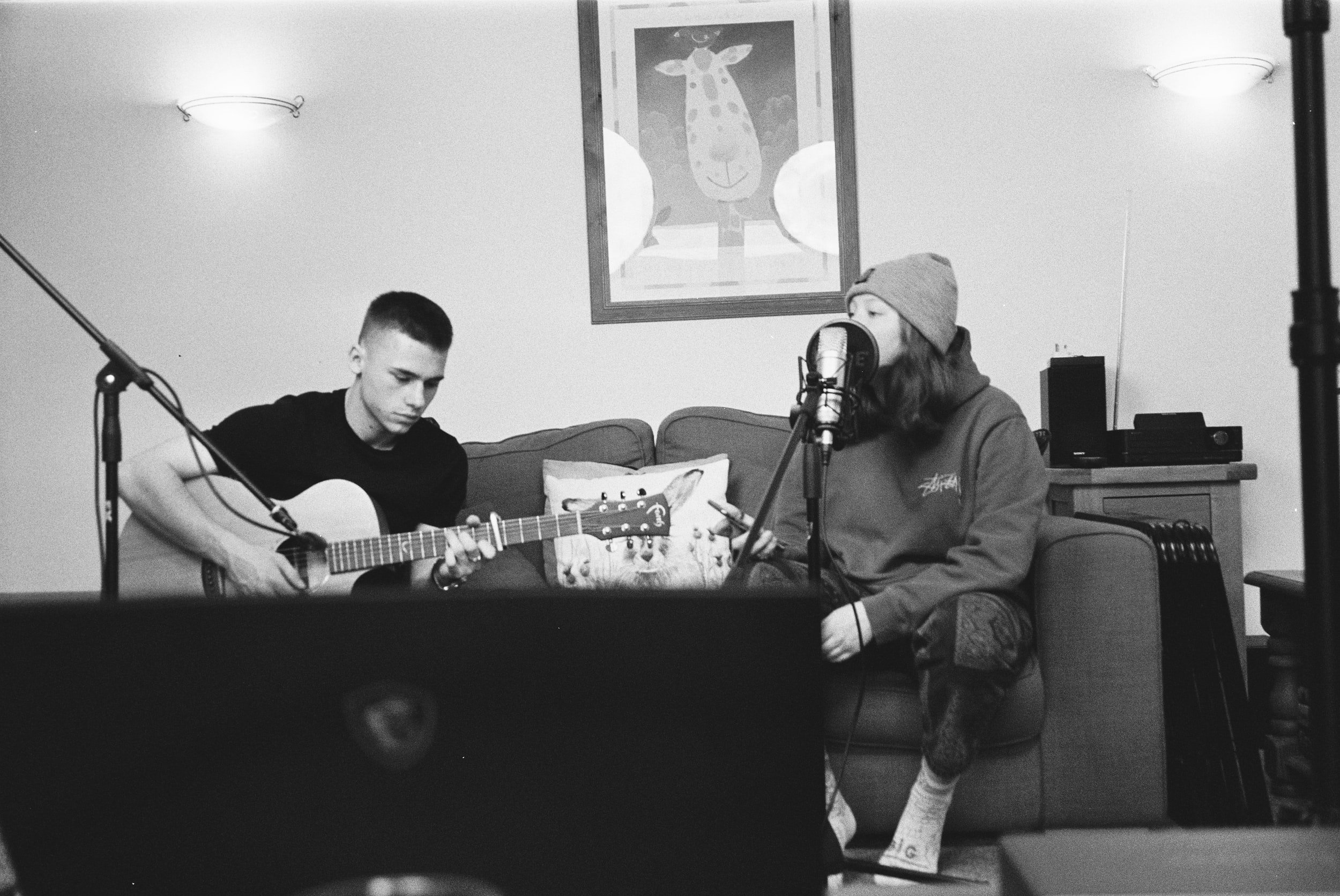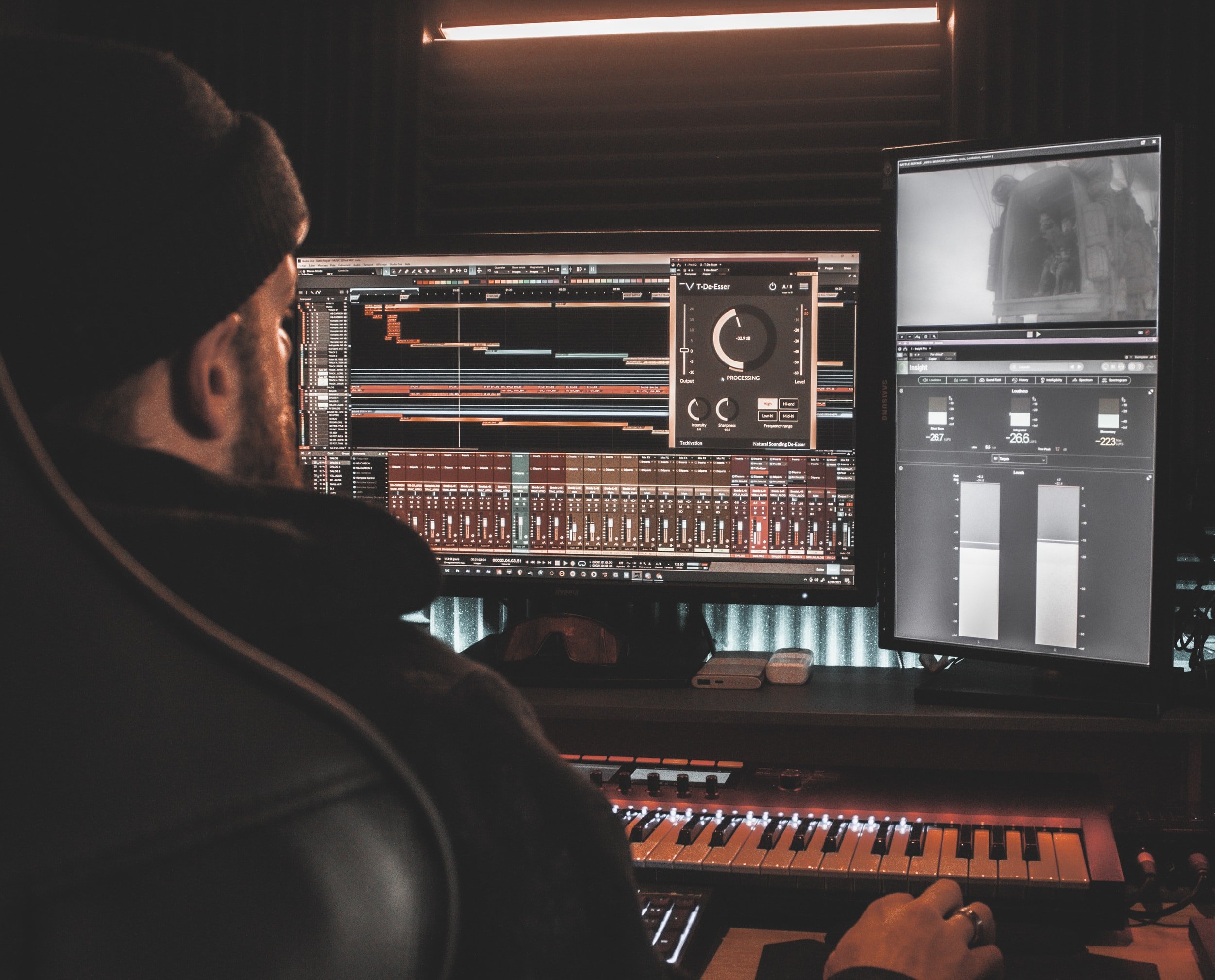Audio production is most often used interchangeably with the term “music production.” However, the two words have different meanings. Audio production is a broad term representing multiple tasks regarding audio and recording. In addition, there are other industries besides music that require audio production.
With today’s digital technology, it can be more accessible than ever for music artists, podcasters, and independent filmmakers to perform audio production work. However, understanding how audio production works to create a final music piece or master recording involves many steps.
The skills necessary for audio engineers, producers, and musicians include having a keen ear to detect various sounds and identify what makes high quality. Experts in the music industry who have been working with sounds for a long time understand what helps provide enhanced audio and what tools are necessary to achieve the best sound.
Many parts encompass the whole of audio production, so understanding each aspect that audio production entails is essential. In this piece, you will realize what audio production is and what tools are utilized in audio production.
Audio Production for Musicians
As an independent or aspiring musician, the idea of audio production involves everything from songwriting to the complete master of an original piece of music. Music producers do not typically work alone; some people handle different areas within the production, from the songwriting by the musician to the recording, mixing, and mastering by sound engineers.
The scope of audio production is a way for musicians to take something they have created and give it life. A piece of music is not valid until it can be recorded and listened to by others. Sound, mixing, or mastering engineers play integral roles in audio production, but don’t assume that they are any less creative than the musician; positioning of recording equipment and alterations done on the backend of recordings can drastically alter and change sounds.
Music production oversees the song flow and brings about certain emotions by utilizing instruments and voices specifically. Here is a breakdown of the different parts of audio production for musicians.
Song Composition
The lyrics and initial melody of music are known as songwriting, which kick starts the audio production process. Musicians in bands may collaborate and work together to develop the song, while individual artists may consult with a music producer for assistance.
Audio production works with the song’s foundation and builds upon it. Since the music is still the basis at the beginning of the audio process, if it is not good enough, no amount of audio work will make it better.
Arrangement and Editing
Decisions regarding the arrangement of the song include multiple steps, such as:
Length of introduction, verses, and chorus
Instruments to be brought out in different parts of the song
Instrumental breaks or vocal breaks
Changes in keys or notes
Builds to crescendos and decrescendos
Ending to the song
Kristina K., a piano instructor with Music to Your Home, says that “chord progression and instrumental choices are key to establishing an original piece of music and vital to the structure of the song.” In addition, music producers often assist musicians through the arranging and editing process without going against the artists’ vision or changing too much of the song’s original intent.
Feedback can also be helpful during this time, so musicians will sometimes work with audio and music producers to gain insight into what might help the song sound better. For example, sometimes suggestions recommending other instruments, rhythms, or vocals can help develop the song’s arrangement more rich or full.
Once the arrangements and parts have been recorded, next comes the editing. Audio engineers can listen to multiple recordings of a song and decide which one has the best quality or what parts they can take from each recording to splice together.
This part of the audio process also involves cleaning up the sound, such as taking away any unwanted or extra background sound, removing sharp intakes of breath or “pops” from words with a “p” or “t.” They also pay close attention to timing and pitch so that the recordings all fit together well.
Mixing and Mastering
The next stage of audio production is mixing and mastering the song. Mixing also involves some more clean-up of the audio sound, but there are added elements using audio software and hardware. These plugins include tools that are used, which have some of the following:
EQ (Equalizer)
Compression
Reverb
Delay
Vocal Tuning
Expansion or Noise Gates
These effects for production allow the sound to become more high-quality and mastered. There should be a vast difference between the original, unmixed recording and the final master recording. The song should still contain that all instruments and vocals keep their initial sounds and allow the music to meet industry standards while making an impact.
How Audio Production is Used Elsewhere
The film industry, podcasts, video games, and other media platforms utilize audio production in their work. If you think about the crystal clear audio quality you hear when watching television or movies, there is a lot of audio editing and mastering that occurs for it to sound just right.
Likewise, podcasters frequently will hire podcast managers to work on audio production for their episodes. Since podcasts utilize people talking, there is a lot of editing to remove breath sounds, extra background noises, and clean up filler words that are used like “uh” and “um” for a smooth flow.
Learning Audio Production
If you want to learn how to do audio production yourself, there are many options for taking courses or finding out how to do your own composition, arranging, mixing, and mastering. Of course, taking an online course focusing on production can be most helpful. Still, you can also search YouTube since it will have plenty of free tutorials on different audio software and hardware for you to learn, however this option will be a lot more time consuming, less focused and harder to find the right information.
When working on audio production, it is crucial to stay persistent, record ideas often, and get inspiration from listening to a lot of music, podcasts and listening to audiobooks to help you develop and build upon your creativity.
Equipment is another necessary aspect of audio production. While you can easily record using a high-quality smartphone, you may eventually want to invest in some equipment such as software, microphones, pop filters, maybe even a soundbox or foam panels to build your own in-home recording studio.
Don’t rush into anything; start small and invest in your knowledge of learning first, so you can decide what is best to help you grow. Just start simple to build your understanding of audio production, and soon enough, you can become an expert within the industry.
Written by Nicole McCray
-
Jony Studios is developing a course based on all of our experience in the business / music industry. It will be a concise value packed online course on everything you need to know about music production to succeed. From songwriting to producing to marketing your brand.
The course is called: Producer Launch - The Ultimate Online Music Production Course
This will help millions of musicians, home recording studio owners and producers learn what took me over 10 years to learn in a few months, plus it will be lifetime access, so I will keep adding more valuable content for all the people in the course as I keep growing. This is going to be an amazing community as well, where we can all learn from each other and keep growing together.
If you would like to get notified of when this course is released, sign up with your email here. Everyone on that list will receive an exclusive 50% off when the course launches! It’s time to take action now.

















